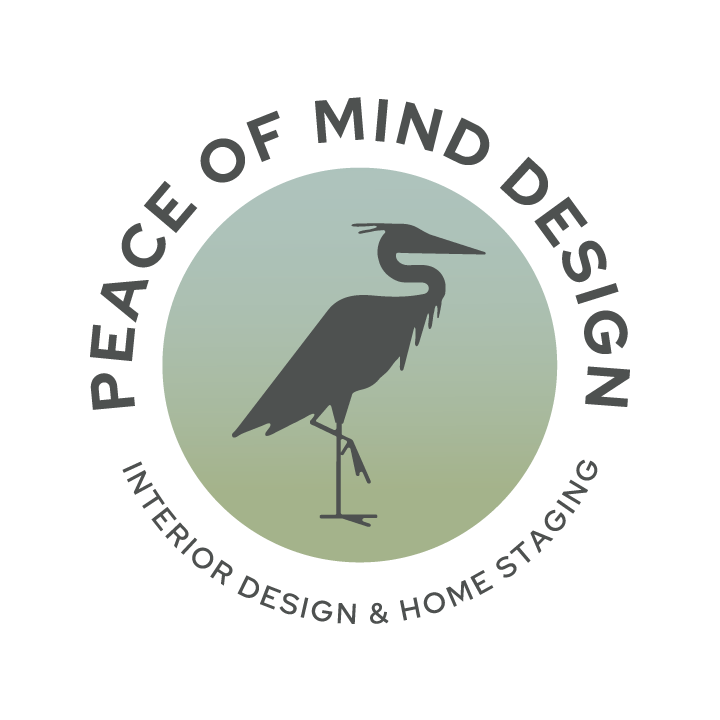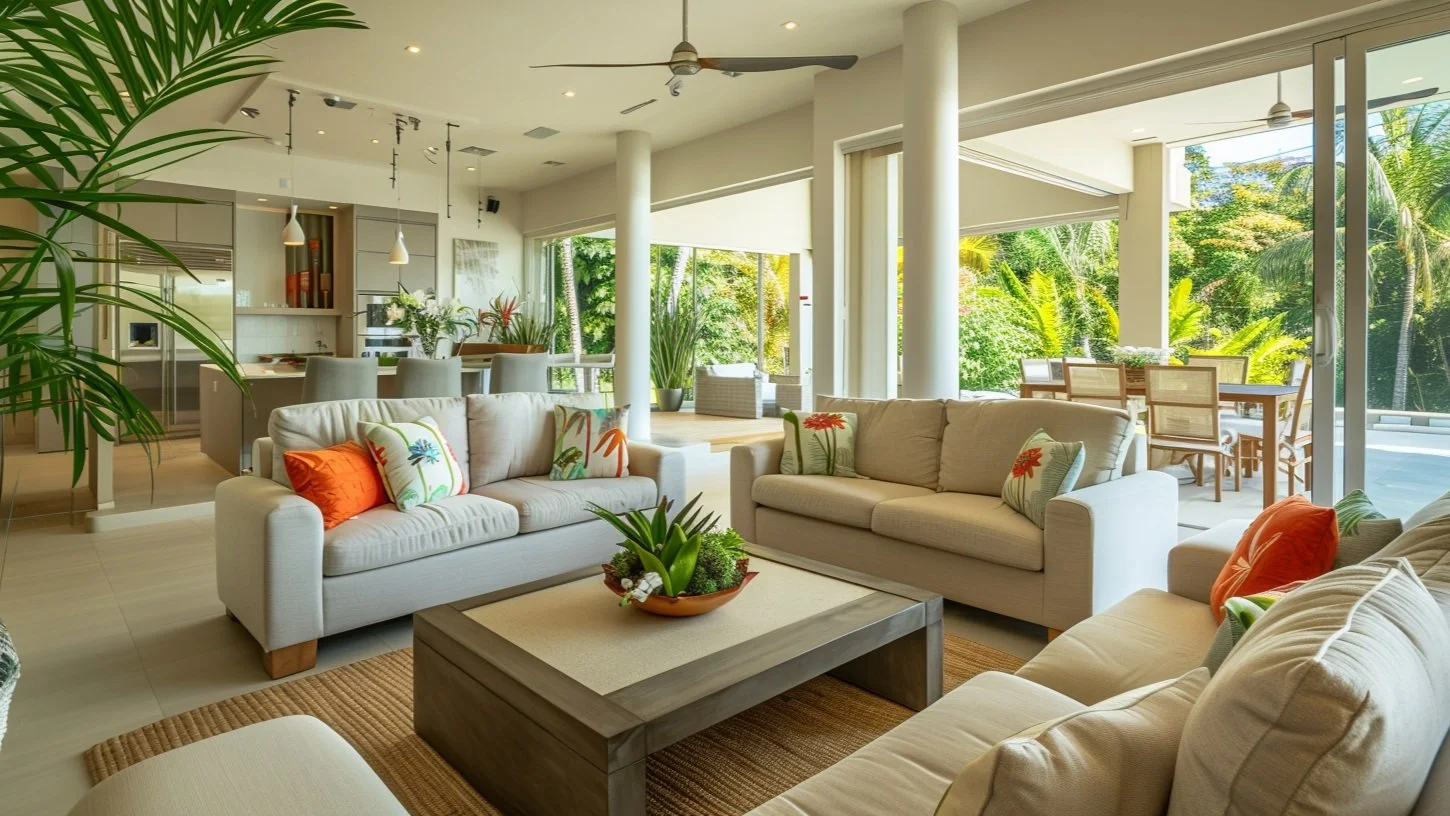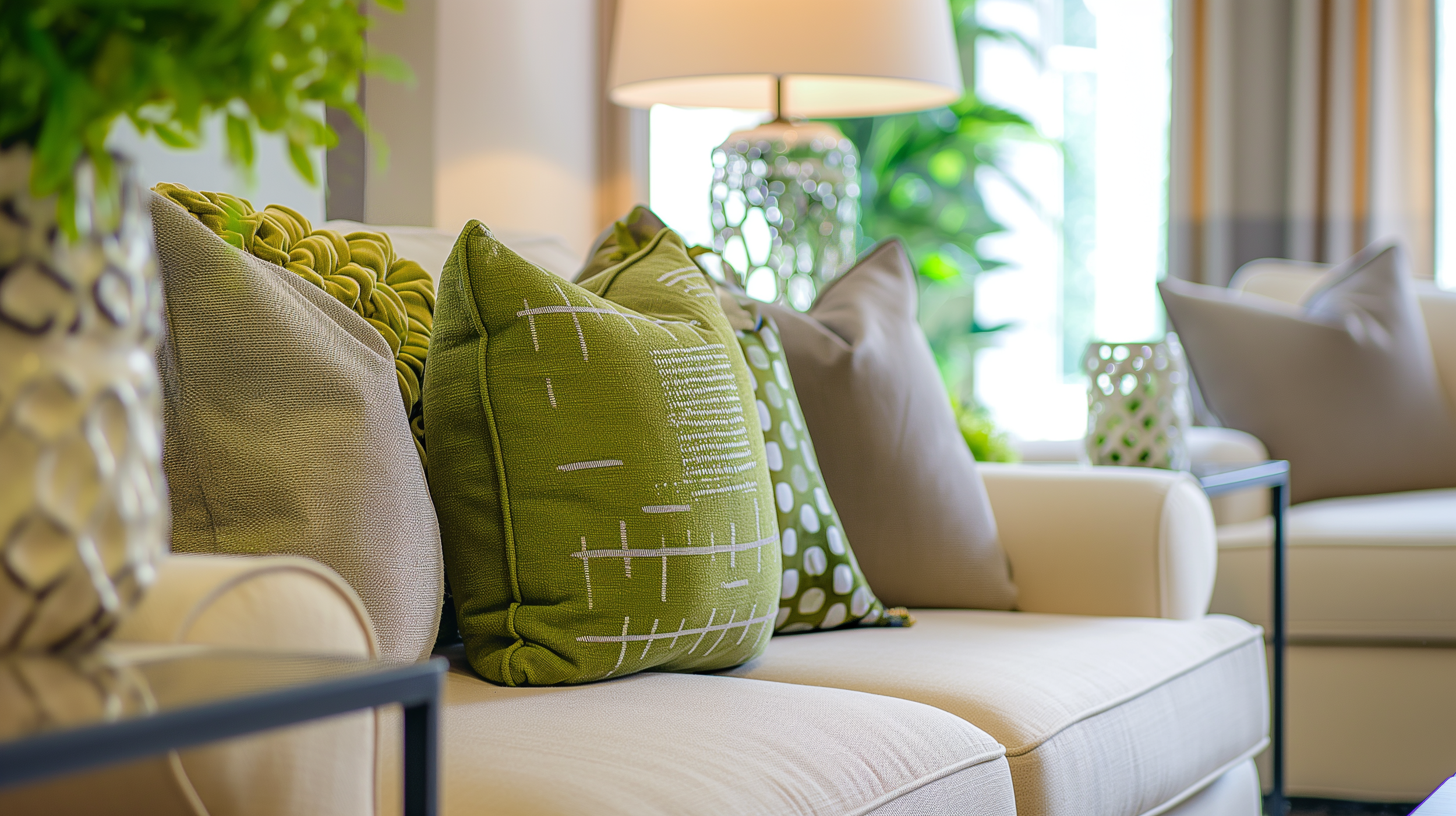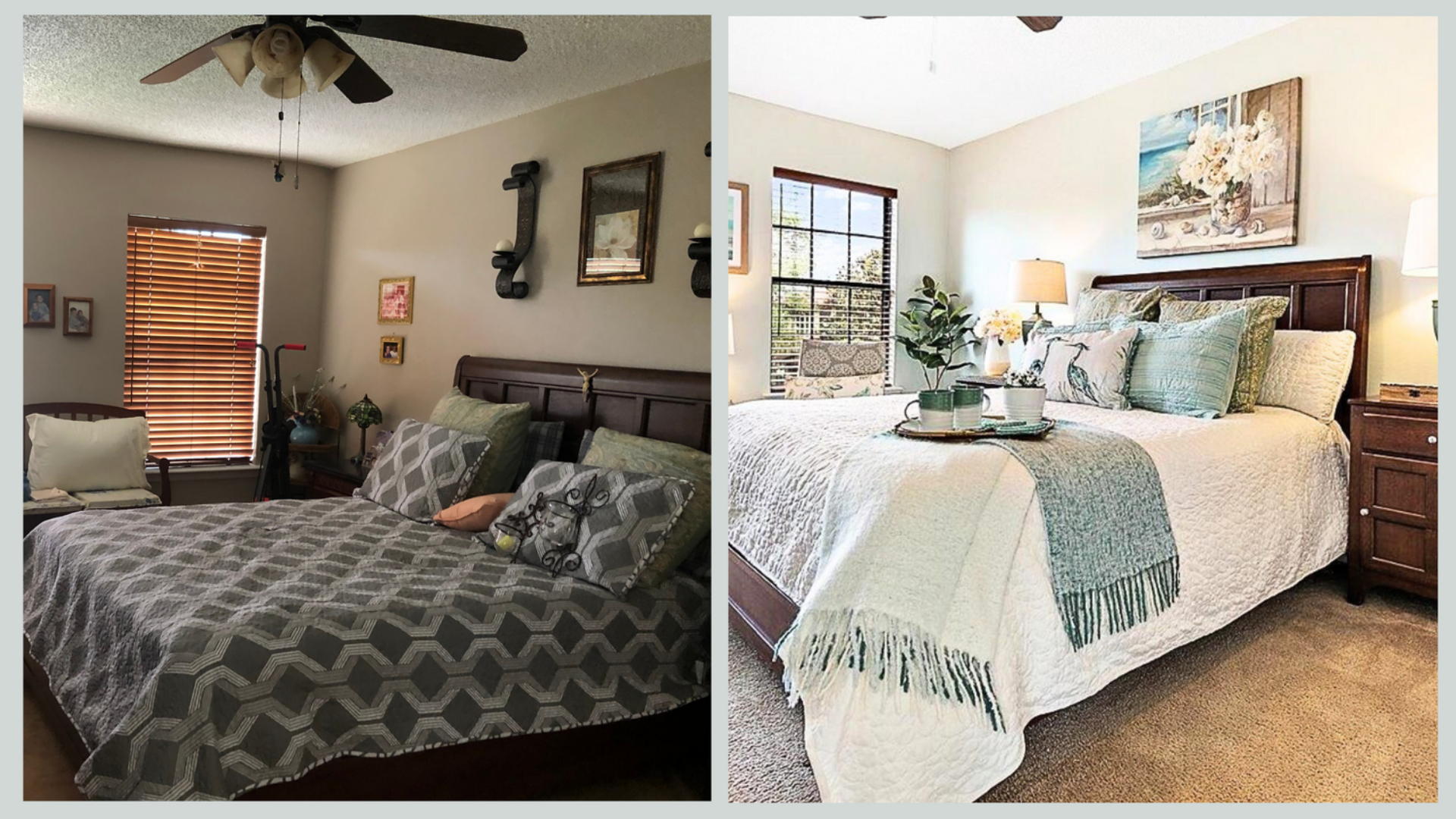As travelers increasingly seek unique and personalized experiences, vacation rental owners have a tremendous opportunity to create spaces that feel like a true home away from home for their guests. Beyond providing basic amenities, crafting a comfortable and inviting environment is essential for ensuring guest satisfaction and earning rave reviews. In this blog post, we'll explore some design tips for transforming your vacation rental into a welcoming retreat where guests can relax, recharge, and create lasting memories.
Read moreMaximizing Returns: How Quality Design Enhances the Investment Potential of Your Vacation Rental
In the world of vacation rentals, the key to success lies not only in attracting guests but also in ensuring they have an exceptional experience that keeps them coming back. While factors like location and amenities certainly play a crucial role, one often underestimated aspect is the power of quality design. Investing in professional design not only enhances the aesthetic appeal of your property but also significantly increases its investment potential. In this blog post, we'll explore how quality design can maximize returns for your vacation rental.
Read more5 Tips for Preparing Your Home for Sale: To Renovate or Not to Renovate?
As an experienced interior designer specializing in occupied staging, I often encounter homeowners grappling with the question: Should we invest in major renovations before listing our home for sale? It's a valid concern, considering the potential costs and time involved in renovating a property. In this blog post, I'll share my insights and tips to help you make an informed decision about whether to renovate before putting your home on the market.
The answer to this question ultimately depends on various factors, including the condition of your home and the local real estate market. While some properties may benefit from major renovations to increase appeal and value, others may not require extensive updates to attract potential buyers. Let's delve deeper into this topic to help you determine the best course of action for your situation.
Assessing the Condition of Your Home
The first step in deciding whether to renovate before listing your home is to assess its current condition. Take a critical look at both the interior and exterior of the property to identify any areas that may need attention. Are there outdated fixtures or finishes that could deter buyers? Are there any structural issues or deferred maintenance that should be addressed?
2. Consider the Local Real Estate Market
Another important factor to consider is the local real estate market conditions. Research recent sales and listings in your area to get a sense of what buyers are looking for and how your home compares. In a competitive market where updated and move-in ready homes are in high demand, investing in renovations may help your property stand out and command a higher price. However, in a slower market where inventory is abundant, minor updates or repairs may be sufficient to attract buyers.
3. Focus on High-Impact Updates
If you decide to renovate before listing your home, focus on high-impact updates that offer the best return on investment. This may include kitchen and bathroom renovations, which are known to yield the highest returns in resale value. Additionally, consider cosmetic updates such as fresh paint, new flooring, and updated lighting fixtures to modernize the space and enhance its appeal to buyers.
4. Consider the Cost-Benefit Ratio
When weighing the decision to renovate, it's essential to consider the cost-benefit ratio. Calculate the estimated cost of renovations against the potential increase in property value and sale price. Will the investment in renovations result in a significant return on investment, or would the money be better spent on minor updates and repairs? Be realistic about your budget and the expected outcome of the renovations.
5. Consult with a Professional
Finally, consider consulting with a professional interior designer and real estate agent who is knowledgeable and recognizes the value of home staging and properly marketing your property. They can provide valuable insights and recommendations based on their expertise and experience in the local market. An experienced professional can help you navigate the decision-making process and devise a strategic plan to maximize the sale potential of your home.
In conclusion, whether to invest in major renovations before listing your home is a decision that should be carefully considered based on the condition of your property, the local real estate market, and your budgetary constraints. While renovations can enhance the appeal and value of your home, they may not always be necessary or cost-effective. By weighing the pros and cons and consulting with professionals, you can make an informed decision that sets you up for success in selling your home.
Ready to get expert guidance on maximizing your home's value?
Book a Complimentary Exploration Call and we'll help you navigate this important decision.
5 Steps to Transforming Homes for a Faster Sale: Mastering Occupied Staging:
As an interior designer specializing in occupied staging, I've had the privilege of helping countless homeowners prepare their properties for sale. Occupied staging is a unique challenge, requiring creativity, resourcefulness, and a keen eye for design. In this blog post, I'll share my insights and tips for mastering the art of occupied staging to help you sell your home faster and for top dollar.
Occupied staging involves styling and decorating a home that is still occupied by the homeowner. Unlike vacant staging, where a professional stager brings in furniture and decor to showcase the property, occupied staging requires working with the existing furnishings and belongings of the homeowner. This presents both opportunities and challenges, as we strive to enhance the home's appeal while respecting the homeowner's personal style and preferences.
The key to successful occupied staging is striking the right balance between depersonalizing the space to appeal to a broad range of buyers, while still infusing it with warmth and personality. Here are some strategies I use to achieve this:
Declutter and Depersonalize: One of the first steps in occupied staging is decluttering and depersonalizing the space. This involves removing personal items such as family photos, knick-knacks, and excessive decor to create a clean and neutral canvas that allows potential buyers to envision themselves living in the home.
Neutralize Color Palette: While some homeowners may love bold colors and patterns, it's essential to neutralize the color palette to appeal to a wider audience. I often recommend painting walls in soft, neutral tones such as beige, gray, or taupe to create a cohesive and inviting atmosphere.
Enhance Curb Appeal: First impressions matter, so it's crucial to enhance curb appeal to attract potential buyers from the moment they arrive. Simple updates such as painting the front door, adding potted plants, and ensuring the yard is well-maintained can make a big difference in creating a welcoming exterior.
Highlight Key Features: Occupied staging is about showcasing the home's best features while minimizing its flaws. I work closely with homeowners to identify and highlight key architectural details, such as crown molding, built-in shelving, or a cozy fireplace, to draw attention to the home's unique selling points.
Create a Functional Layout: In occupied staging, it's essential to create a functional and flowy layout that maximizes space and allows for easy navigation. I often rearrange furniture, remove bulky items, and create conversational seating arrangements to showcase the home's potential and functionality.
By implementing these strategies, I've helped countless homeowners sell their properties faster and for top dollar. Occupied staging requires a delicate balance of depersonalization, neutralization, and enhancement to create a space that appeals to a broad range of buyers while still feeling warm and inviting. If you're preparing to sell your home, consider enlisting the help of a professional occupied stager to help you achieve maximum results. With the right expertise and guidance, you can transform your home into a buyer's dream and secure a successful sale.
Book a consultation with us and let’s transform your property for a faster sale!
The Benefits of Customizing Furniture: What Clients Can Expect When Working with an Interior Designer
Want a home that reflects you? Customize furniture! It fits your space perfectly, matches your style, and can even maximize storage. An interior designer helps translate your vision into reality, from unique finishes to hidden compartments. Custom furniture adds value to your home with high-quality materials and a one-of-a-kind look. Work with a designer for a collaborative process that creates a space you'll love.
Read moreThe True Cost of Custom Furniture: Why It's Worth the Investment
The Value of Customization
Are you considering custom furniture for your home but feel hesitant because of the cost? While it's true that custom furniture can be more expensive than mass-produced items, it's important to consider the value and longevity that custom pieces can provide for you and your family.
Custom furniture is designed and built specifically for you, which means it's tailored to your unique needs and preferences. You have control over the design process, from the materials used to the finishes applied, ensuring that the final product is exactly what you envisioned. This level of customization can be especially valuable if you're looking for a one-of-a-kind piece that can't be found in a store.
The True Cost of Mass-Produced Furniture
When it comes to the cost of custom furniture, it's important to keep in mind that you're paying for the expertise and craftsmanship of the designer and artisans involved in the process. The raw materials used in custom pieces are often of higher quality than those used in mass-produced items, resulting in a longer lifespan and better overall value.
It's also worth noting that the cost of mass-produced furniture is often not reflective of its true value. Many furniture companies prioritize low costs over quality, resulting in items that are designed to be replaced rather than last. This means that while the initial cost of a mass-produced item may be lower than that of a custom piece, you may end up spending more in the long run as you replace worn-out or damaged items.
The Benefits of Custom Furniture
Furthermore, mass-produced furniture often lacks the unique design and attention to detail that custom pieces offer. With custom furniture, you can be sure that every aspect of the piece is intentional and tailored to your needs and aesthetic preferences.
Custom furniture offers a level of attention to detail that can't be found in store-bought furniture. Whether you're looking for a specific size or shape, a certain type of wood or finish, or a unique design element, custom furniture can deliver exactly what you need. And because it's built to your specifications, you can be sure that it will fit perfectly in your space and meet your functional needs.
The Long-Term Value of Custom Furniture
As I mentioned, when considering the cost of custom furniture, it's important to factor in the long-term benefits that it can provide. A custom piece can last for decades, whereas a mass-produced item may need to be replaced within a few years. Additionally, a unique and high-quality piece can add value to your home and elevate your overall design aesthetic.
Custom furniture is an investment in the future of your home and your personal style. By choosing custom pieces, you're creating a space that reflects your unique personality and preferences, and that will stand the test of time. And because custom furniture is built to your specifications and preferences, it will always feel like a true reflection of your style and taste.
So ask yourself, “Am I looking for a piece that I will replace in a few years, or am I looking for an heirloom piece?”
Let’s answer that in our free Discovery Call, you can schedule by clicking the link below!
From Chaos to Calm: The Professional Psychology Behind Successful Home Design
Discover the profound impact of interior design on mental well-being. Dive into color psychology, spatial arrangement, and the influence of natural elements. Learn how personalized spaces, proper lighting, and clutter-free environments can positively shape your mental state. Explore the cultural dimensions of design for a holistic well-being experience. Elevate your surroundings with psychological insights!
Read moreAvoid Costly Mistakes: Why DIY Interior Projects Can Backfire
Home improvement dreams can turn into costly mistakes without professional guidance. An interior designer can help you navigate complex projects like kitchen remodels, backsplash installations, and upholstery work, ensuring a beautiful and cohesive result. Invest in expert advice for a worry-free home makeover!
Read moreOvercome Design Dilemmas and Secure Success
Tired of generic design? Peace of Mind Design helps you craft spaces that tell your story. We go beyond just picking pretty surfaces - flooring, countertops & tiles become canvases reflecting your unique personality & aspirations. Our experts guide you in creating a home that resonates emotionally, from cozy hardwood floors to artistic tile narratives. Partner with us & let your home sing your song!
Read moreColor Confidence: Why Hiring a Pro for Your Exterior Paint is a Wise Investment
Color Confidence
Act Now, Transform Tomorrow: Your Home's February Facelift Awaits!
Revitalize your home this February! Dive into the art of exterior painting with Florida's perfect weather. Our Color & Surface Consultation service, led by a Psychological Color Expert, ensures personalized guidance, informed decisions, and a flawless paint schedule. Elevate your space with confidence! 🌈✨
Read more












